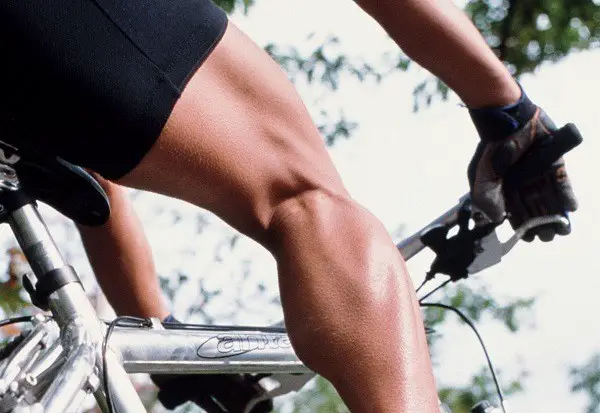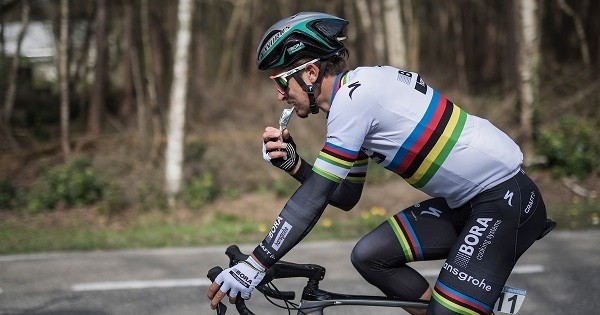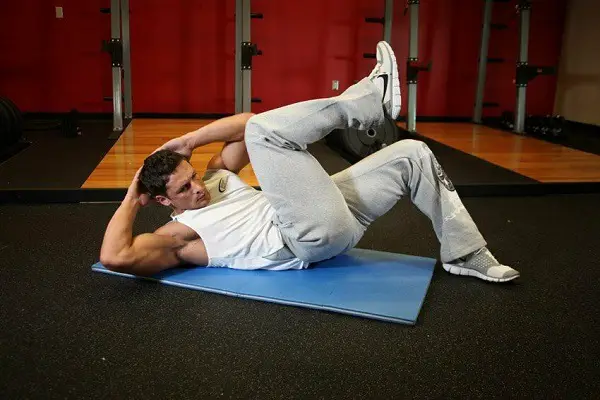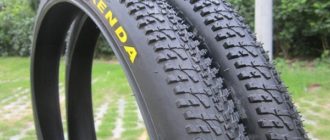The benefit of the bicycle is undeniable – it is not only a means of active recreation, but also an excellent trainer for physical development. Training on a bicycle differs favorably from other types of exercise, so they are becoming more and more popular. In order for the process to be effective, you need to know the subtleties of cycling training for beginners and how to train properly to pump muscle mass, lose weight and improve health.
How to train on a bicycle correctly
Before you start exercising, you need to choose the right bike. It matters your level of fitness and the terrain where you are going to ride. Professionals usually choose road bikes for riding in town, but you have to keep in mind that they should only be ridden on level roads. For the same rough terrain is better to buy a hybrid model of the bike.
For training on the bike it is also necessary to choose the best time – usually it’s either in the morning or in the evening. In the daytime, especially in the warm season overheating of the body is inevitable. If you intend to train in the winter, make sure you have the right equipment to protect you from the cold air and do not ride out if the thermometer shows a temperature below 8°C.
Knee pads and elbow pads are not necessary for adults, but a helmet is a must. Going out at night, it is worth to provide your bike light and reflective elements (the latter also apply to clothing).
A fitness tracker is a handy device to record the distance covered. It is best if it will be a device with a heart rate monitor, which will show your heart rate.
Intensity
Trainers of various sports advise to alternate load and rest periods to get the best effect from training – cycling also applies. When increasing or decreasing the intensity of training, the principle of wave-like increase is very important, for example
- Monday is an intense workout for 60 minutes;
- Tuesday, a 60-minute leisurely bike ride for recovery;
- On Wednesday, take a break from cycling, preferably a strength training session;
- Thursday again an intensive workout, which can last up to 80 minutes;
- on Friday the load is reduced, but the time increases to 90 minutes, the speed of the ride is moderate, without jerking;
- on Saturday it is better to make a full day off from any loads at all;
- on Sunday to train for endurance – means riding at low or medium speeds for three hours.
Quality cycling training for beginners is to cover a distance of 250-300 km per week. For more advanced riders and professional riders, 500-800 km.
Increasing endurance
Endurance for cyclists is very important, especially for those riders who plan to participate in multi-day trips or competitions. In order to increase endurance, it is necessary to increase the duration of training and distance every week. And the ride should not be too fast or with sudden changes, you should stick to a moderate pace. For reference: a leisurely bike ride is one in which you can pedal and talk without panting. If it’s hard to do that, however, it’s a good idea to slow down.
A training plan for cycling to improve endurance may also be as follows:
- leisurely riding for three and a half hours with a quick finish at the end;
- a hilly walk for four hours;
- Riding for five hours at a leisurely pace with a fast finish.
Exercise
Special exercises to develop different muscle groups can make cyclists’ training even more effective. Their goal is to develop the ability to ride faster and longer. The exercise program can be as follows, to choose from:
- hill climbing and descending workout – for five minutes you ascend an elevation, then descend (this is the recovery period), then for 10 minutes you do a warm-up and repeat the five-minute ascent and subsequent descent. Make eight such approaches per workout;
- Intensive riding for five minutes on a flat surface, accelerating to 80-90% of the heart rate limit, then a minute and a half is given to rest, then a 10-minute leisurely ride, and then a repeat of the five-minute intensive ride at the limit. A total of five such approaches are made per workout;
- A 10-minute leisurely ride, after which the pace is increased to 75% of your heart rate limit and sustained for the 40-minute ride. To check yourself if you are riding at the right pace, you can do this: while talking, you can barely say more than five words in one breath. The training ends with a 10-minute leisurely ride.
The last two sessions can be done on a home turbo or exercise bike.
Balanced nutrition.
The degree of intensity of training affects cyclists’ eating patterns. A leisurely walk at a moderate pace for an hour will not make adjustments to your daily diet. It is optimal to go for such rides in the morning on an empty stomach, which allows the body to use up reserves from fat or glycogen deposits. But for a high-intensity workout or a long ride, you need to take care of additional sources of energy.
Important: Never start a workout on a full stomach! You should allow 2 hours between meals and exercise.
For low-intensity workouts, three meals a day with slow carbohydrates (whole-grain cereals, root vegetables, legumes – each serving should be the size of a fist) and proteins (a handful-sized portion) are sufficient. Fresh vegetables or a salad of them – in unlimited quantities. For a snack, vegetables and fruit.
If you are doing a medium-intensity workout or spend more than an hour – up to 90 minutes – you can “refuel” with a banana, toast, a couple of slices of malted bread or nonfat yogurt with a spoonful of honey.
High-intensity workouts assume that you will saturate your body with enough energy, otherwise you simply will not be able to carry out such sessions. Here you should already have 5-7 fist-sized servings of carbohydrate foods and 4-6 handful-sized servings of protein foods each throughout the day.
If you’re going on a long bike ride, it’s worth stocking up on glycogen-rich foods and foods that contain fast carbs. These can be nuts, gelatin candies, protein bars. You should snack on such foods every 45 minutes of cycling.
Also, you should always take water or a fruit smoothie with you during your workout. During the training it is enough to drink a couple of sips to soak the throat, and at the end of it you can freely drink up to a liter of liquid. A full meal may not be until two hours after the workout.
Recovery
Proper cycling training is not only about tracking the intensity and duration of the ride, but also understanding the need for rest and recovery after exertion. Excessive muscle strain leads to a loss of effectiveness from the workout and, most importantly, the desire to do it. That is why it is important to make a workout schedule in advance, which will take into account your workload in other areas of life (work, family, etc.) and, of course, the state of your health.
By the time it’s time for your next workout, your body should be fully recovered. This may take a couple of days for a novice cyclist, but in time it will be reduced to a day off, and then you will be so adapted that you can work out every day.
As you get used to the load, they can be increased, but you need to do it without straining, smoothly, enjoying the process – cycling and exercise.
Exercise for those who want to bike faster
It is a mistake to think that the hallmark of a good cyclist is pumped up legs. Strong body muscles are also important, they not only reduce the load on the legs, but also help to develop greater speed during the movement.
We offer you a training program, designed for only ten minutes, which will strengthen the abdominal muscles, lower back, glutes, hip flexors and hamstrings. This set of exercises is performed three times a week:
- Exercise “Boxer curls”: Lie on a fitness ball with the middle part of your back resting on it, firmly pressing your feet to the floor and bending your knees at an angle of 90°. Put your hands behind your head and fold them into a lock, so that they do not squeeze the neck. As you do this pull your stomach in, lift your upper torso so that your shoulder blades are away from the mat. Rotate your body slightly clockwise and return to the starting position. Press your lower back on the support for balance. Perform 15 such twists of the torso clockwise, then counterclockwise.
- Bridge” exercise: lying on your back, put your heels to your buttocks, bending your knees. Place your hands along your body, palms down. Squeeze your buttocks and smoothly lift them up. The hips also go upward, with the emphasis on the heels. Align the torso in a straight line from shoulders to knees, hold the position for 4-5 seconds, then lower the body for three quarters without touching the floor with the buttocks. Then raise the pelvis again, forming a straight line. It is necessary to perform 20 such approaches.
- Exercise “Thigh lift”: lying on a fitball with your thighs and stomach, lean your palms on the floor so that they are directly on the shoulder line. Keep your legs straight and rest your toes on the floor. With your back straight and your shoulder blades together, lift your legs as high as possible, ideally above your hip line. Hold them in this position for 5-6 seconds, then return to the starting position. Perform 20 such approaches.
- Exercise “Planka”: place the elbows clearly under the shoulders, rest on the forearms and legs, resting on the floor with the tips of the fingers, arms bent at the elbows, hips raised above the floor, so as not to make a sag in the lower back. Hold the body in this position for a minute, breathing through the chest, not the abdomen.
- Exercise “Side bar”: lie on your right side, then bend your right arm in the elbow and lean on your forearm. It is important that the elbow is placed under the shoulder. Rest your left foot on your right foot and extend your left arm over your head. In one motion, lift the body above the floor so that it forms a straight line. After a couple of seconds lower it down to a height of 5 cm from the floor and keep it in that position for a few seconds more, then raise the torso up again. It is necessary to do 10-15 such approaches on each side.
- Scissors” exercise: lying on your back with straight legs, place your hands for support under the lower back, palms down. Resting your elbows on the floor and pulling your belly in, lift your shoulders slightly, looking up at the ceiling. At a height of 10 cm from the floor spread and cross your legs one by one, alternating the upper leg. Each leg change is counted as 1 attempt. It is necessary to do 100 such sets.
- Exercise “Catapult”: sit on the floor, slightly bend your knees, pressing your heels to the floor. Extend your hands with palms facing each other forward and place them at shoulder level. As you take a deep breath look up, straighten your back and as you exhale slowly over five seconds lower your body to the floor. Keep your hands behind your head. As you exhale lift your torso in one movement, making sure that your hands are first. Perform 20 such sets.
- Exercise “Corner”: sitting on the floor, take your hands slightly backwards and press them to the floor, your legs should be straight. Without bending at the knees and keeping them together, lift them above the floor, arms stretched forward up to shoulder level. The stomach should be retracted and the torso and legs should form a right angle. Hold the position for 1 minute.
While cycling fast, the load goes not only on your legs, but also on your abs and lower back. If you have them sufficiently trained, it will be much easier for you to endure long distances and ride up hills without losing speed.
Unusual workouts by famous cyclists
Two-time U.S. champion professional cyclist Chris Baldwin ended his athletic career and became a cycling coach. During his 15 years in the field, he gained a tremendous amount of experience, going from absolutely fantastic training to the most effective. He trained in the Borrego Desert and at 3000 km altitude in an oxygen mask, tried to prepare his body for riding in the heat in the sauna and tested a new technique in training – riding in a plastic raincoat to prepare the body for a serious cycling tour in the Georgia heat.
As a result, by filtering out unsuccessful techniques, general principles of cycling training were developed, which can be tried on every beginner and not only:
- Gradualness – taking your workouts step by step with regular training, you can make incremental progress.
- Always work on yourself – when you feel tired, you still need to work out, just reduce the intensity. Every day is made for work, and by overcoming your “don’ts,” you achieve more and get stronger every time, even if you did a light workout that day.
- Respect everything you do – work near your limits, don’t try to outdo yourself in every workout. Accept with respect all that your body is capable of giving you today. This is the only way you can increase your capacity.
- Listen to your body, don’t be torn by the numbers of your accomplishments, if you’re really tired, workout schedules will have to wait.
- Work on building your base – develop your aerobic capacity. At a competition, someone who pedals hard and breathes evenly has a better chance of winning than someone who breathes while barely catching his breath. Even if your performance is much worse in other areas, high aerobic capacity will ensure success.
- Give yourself time to recover, with intensive training comes fatigue quickly, which then hides your tremendous capabilities. Get rid of fatigue, give yourself a rest to give your body an opportunity to show later what it is capable of.
- Don’t neglect repetitions – through them during training the body gets used to the load and the necessary mode of operation. And periodically challenge yourself – this will allow you to test your abilities and expand your capabilities.
Conclusion
The benefits of cycling: increased physical endurance, improved mood, normalization of the heart and blood vessels, bringing your body into great shape and much more – this is what attracts more and more people every year. Training on a bicycle can give you the joy of overcoming your limitations, the excitement of increasing the capabilities of your body, the feeling of beauty of the results. The main thing is to make a proper training plan and stick to it every day.









